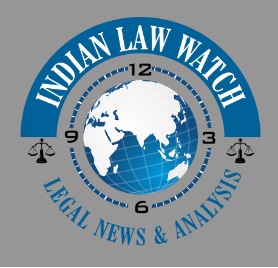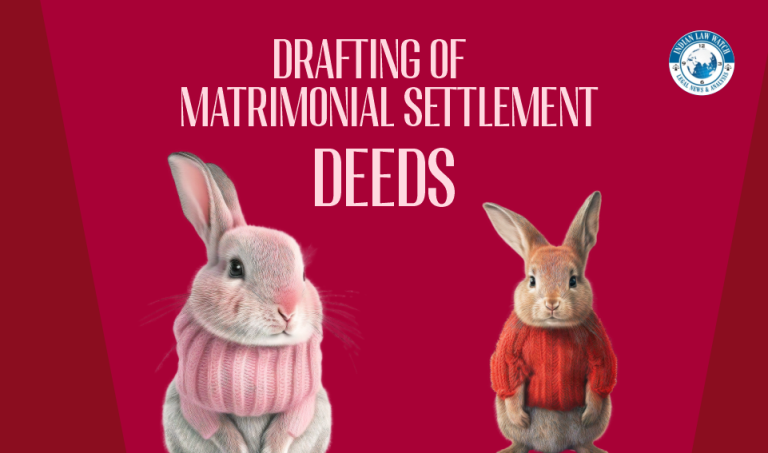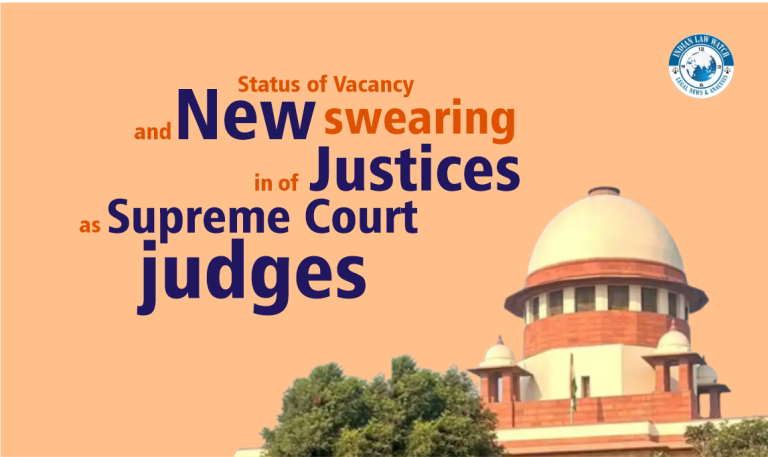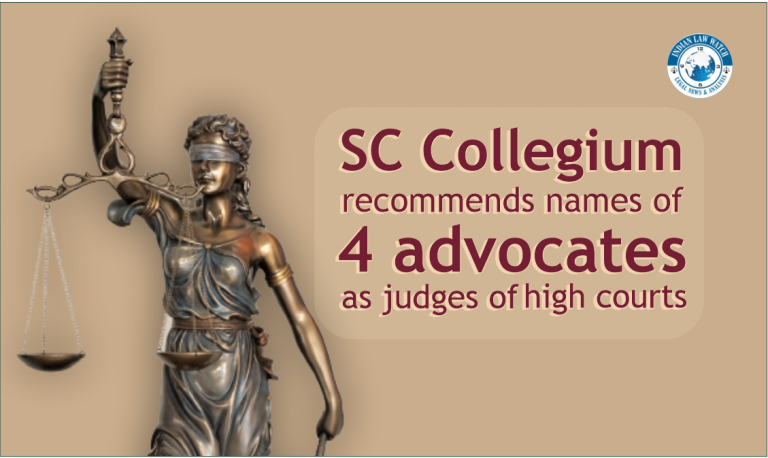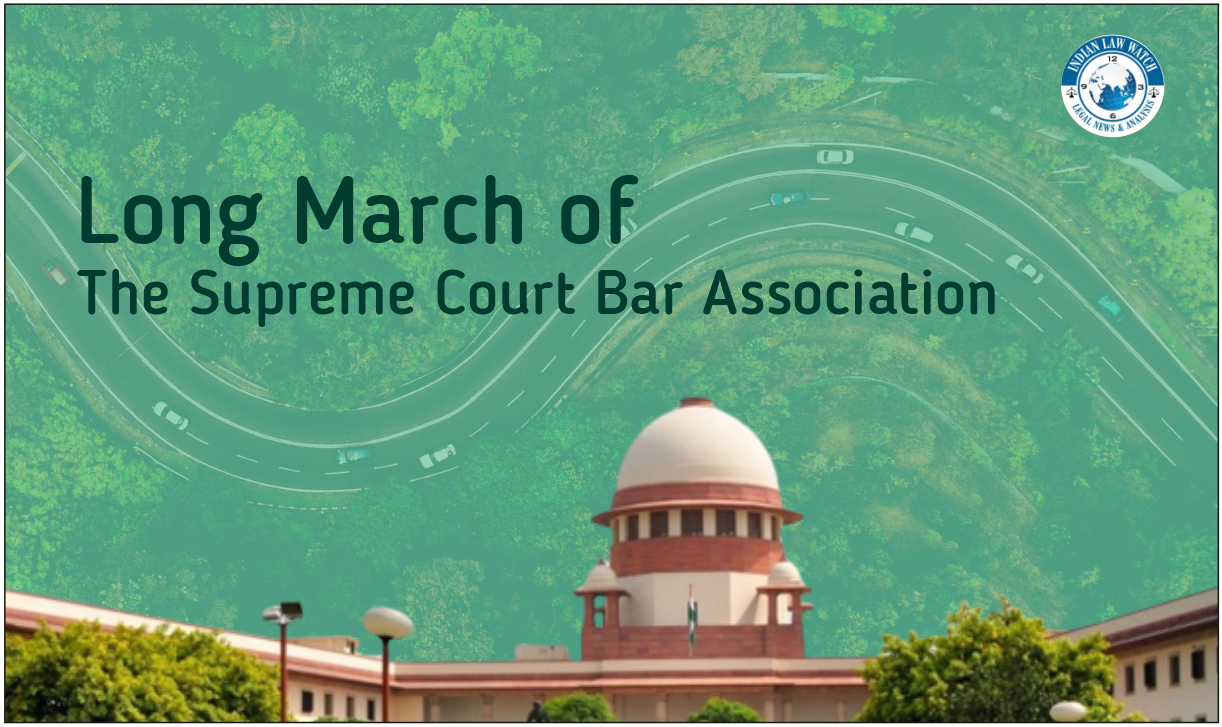

Supreme Court has its own body to represent its lawyers as the name suggest and is popularly known as Supreme Court Bar Association (SCBA). Minimum criteria to enrol to this organisation is to be a lawyer with recommendation letters of Proposer & First Seconder, who have signed over the Admission Form and they are not less than 10 years of standing in SCBA. Signature nine other Seconders over the Admission Form who are not less than 5 years of standing in SCBA. The Supreme Court Bar Association has been body of lawyers of the top most court of India spearheading movement for upholding, maintaining and consolidation of the constitutional values of democracy, rule of law and independence of Judiciary.

- Great legal luminaries have been part of SCBA. In its meeting dated 4th May, 1951, the Executive Committee of the Bar Association consisting of legal luminaries like M. C. Setalvad, C. K. Daphtary and K. M. Munshi spoke of their deep concern against the first amendment of the Constitution.
- The Executive Committee also condemned the proposed move to combine the office of Law Minister and Attorney General as a threat to independence of Judiciary.
- During the first decade itself, the Bar Association showed its humane concern for poor litigants and decided to have its own Legal Aid Scheme.
- It came forward to raise its voice against the contempt notice issued by Patna High Court against the defence lawyer who had written an article against the report of the Law Commission.
- The Supreme Court Bar Association has thus maintained its fraternal links with other Bar Associations in India. It also showed its concern for the indigent and infirm members of the Bar who needed financial support.
- During this first decade, the Supreme Court also showed interest in the legal research by becoming a corporate member of the Indian Law Institute.
- A major landmark of the march of the Supreme Court Bar Association was in the tumultuous period between 1970 and 1980. During this period, the historic decision in Keshavananda Bharati case was pronounced by the Supreme Court laying down the implied limitations on the constitutional power of the Parliament to amend the basic structure of the Constitution. The political powers at that time were enraged at the various decisions of the Supreme Court including Keshavananda Bharati and attempted to encage and emasculate the Judiciary. The ostensible reason put forth by the Government was to have the judges who are “forward looking” and understood “the winds of change”. The Supreme Court Bar Association, the other Bar Associations in the country and the public opinion rose with one voice against this onslaught on the Judiciary. Justice Hidyatullah J represented an emotional concern of the Bar in one word. Hidyatullah J said that this was an attempt of not creating ‘forward looking judges’ but the ‘judges looking forward’ to the plumes of the office of Chief Justice. Shri C. K. Daphtary described 25th April, 1973, as the blackest day in the history of democracy.
- The landmark development in the eighties are the three decisions of the Supreme Court regarding the appointment and transfer of judges in higher Judiciary. This was at the initiative of the Advocate on Record’s Association of the Supreme Court. The Supreme Court asserted its primacy on the appointment, transfer of judges and bid to end the monopoly of the Executive. The independence of Judiciary is thus established with the bold initiative taken by the Bar. By the end of 1979, the Bar Association decided to celebrate 26th November every year as a “Law Day” to mark the anniversary of the adoption of the Constitution.
- The Supreme Court Bar Association joined the national movement against the eclipse of democracy during the Emergency proclaimed in 1975. The Bar actively canvassed for restoration of democracy, abolition of MISA and DIR and holding free and fair elections. It raised strong objections against the 42nd Amendment which was aimed at giving arbitrary powers to the Executive and curtailing the judicial review. It also showed concern for rule of law and democracy in the neighbouring countries like Pakistan, Bangladesh and Sri Lanka.
- The Bar Association rendered positive help by raising funds for wars with Pakistan, cyclones, earthquakes. The Bar opposed inequitable terms of the settlement of compensation to the victims of Bhopal gas and its Executive to intervene in the pending case in Supreme Court.
- The Bar did not falter to protest against the conduct of the Chief Justices and the Judges of the Supreme Court which tended to compromise judicial independence and integrity. It also took introspective steps to control the eminent members of the Bar who had gone astray from the exemplary professional conduct and professional ethics. The Bar Association also contributed to the amendment of the Supreme Court Rules and the Procedure and Practice in the Supreme Court. From its very inception, the Supreme Court Bar Association took interest in establishing Bar Council for maintaining professional standards in the profession and legal education.
- In the last decade, there have been some major incidents which were likely to shake the confidence of the people in the judicial system. SCBA took strong initiative to voice its concern and to play constructive role. For the first time, a judge of the Supreme Court of India was impeached by the Parliament for corruption. The Bar intervened in the pending litigation in the Supreme Court as the concerned judge had not resigned and was purporting to do judicial work. In another case, the then Chief Justice disclosed in the Court that one gentleman was trying to interfere with the Hawala case then pending and had tried to meet the Chief Justice and the Hon’ble Judge of the Supreme Court. The Bar took exception to this mere expression of displeasure by the then Chief Justice and passed a resolution urging the then Chief Justice to start contempt proceedings against the said gentleman.
